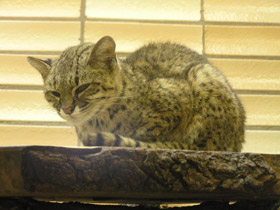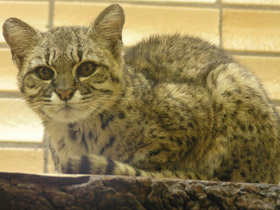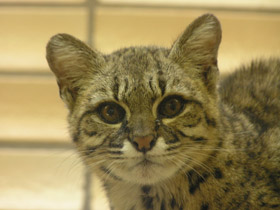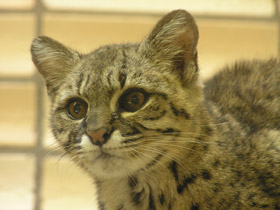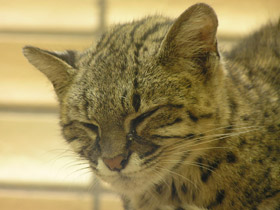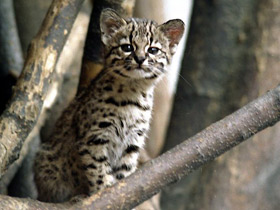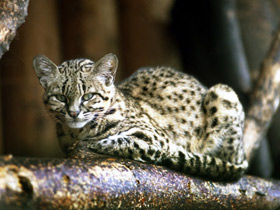Geoffroy's cat (Leopardus geoffroyi)
Geoffroy's cat видео
Geoffroy's cat (Leopardus geoffroyi) is a small wild cat native to the southern and central regions of South America. It is about the size of a domestic cat. It is listed as Least Concern on the IUCN Red List because it is widespread and abundant over most of its range.
Taxonomy
Geoffroy's cat is named after the 19th century French zoologist Étienne Geoffroy Saint-Hilaire (1772–1844). It was identified as Felis geoffroyi in 1844 by French naturalists Alcide d'Orbigny and P. Gervais on the basis of three specimens that d'Orbigny had collected on the banks of the Rio Negro in Patagonia during his travels in South America between 1826 and 1833. Five subspecies have been described based on geographic dispersement:
- Leopardus geoffroyi geoffroyi: Central Argentina;
- Leopardus geoffroyi euxantha: Northern Argentina, Western Bolivia;
- Leopardus geoffroyi leucobapta: Patagonia;
- Leopardus geoffroyi paraguae: Paraguay, Southeastern Brazil, Uruguay, Northern Argentina;
- Leopardus geoffroyi salinarum: Northwestern and Central Argentina.
Since 2017, Geoffroy's cat is considered a monotypic species.
Genetic studies have shown that Geoffroy's cat is most closely related to the kodkod.
Distribution and appearance
Leopardus geoffroyi is a species of carnivorous mammal of the family Felidae.
Leopardus geoffroyi inhabits southern South America from Bolivia and southern Brazil to Patagonia. The species is found exclusively east of the Andes in forests and forest steppes, deserts, pampas and swamps. Leopardus geoffroyi likes to hide in dense thickets, but in forested areas it hunts and sleeps in trees.
Leopardus geoffroyi is about the same size as a domestic cat: body length 70-110 cm, height at withers up to 23 cm and weight 3-8 kg.
Nutrition
Its diet includes a variety of small rodents (rats, guinea pigs, agoutis), rabbits, birds and their eggs, reptiles, insects and amphibians. Leopardus geoffroyi are excellent swimmers and often catch fish, which is why they are called "fish-cats" in South America. They hunt on the ground, in trees and near water, especially at night; when food is plentiful, they make reserves.
Social behaviour and reproduction
Like many cats, these small carnivores lead a solitary life. The individual patch of a male partially overlaps with that of several females, and its area in males is up to 10 km2, in females up to 4 km2.
Leopardus geoffroyi breeds all year round, preferring the seasons when food is most abundant. They mate in trees. After a gestation period of 72 to 78 days, 2 or 3 kittens are born in a shelter under a bush, in the hollow of a tree or in a rocky cave. The males do not participate in the rearing of the kittens. Kittens grow rapidly, emerging from the den at 2-3 weeks of age; their mother feeds them with milk until they are 3 months old. Females reach sexual maturity at 18 months and males at 2 years.
Conservation status
Leopardus geoffroyi owes its name to the French naturalist Joffre Saint-Hilaire, who travelled in South America and probably discovered the species. Unfortunately, the skins of these cats have long been used in the production of fur coats. More than 5,000 specimens per year were traded, which accounted for one tenth of the total population of the species. Leopardus geoffroyi has become an extremely rare and endangered species and is therefore listed in the CITES Convention (Appendix II). Hunting of Leopardus geoffroyi is banned, but farmers continue to kill the cats when they attack small livestock.
According to a 2017 IUCN SSC Cat Specialist Group study, Leopardus geoffroyi was recognised as a monotypic species with morphological differences according to the region they inhabit, based on data obtained from the study of 38 specimens. An example would be the supposed salinarum would have a more greyish colour and smaller skull than paraguae.

















